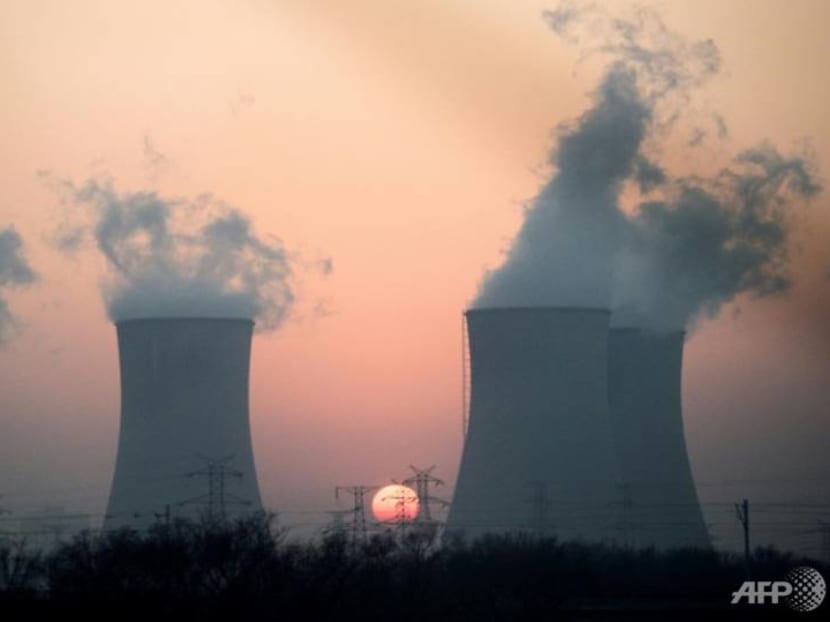Commentary: What’s at stake at COP26 for Asia
Any progress made in Glasgow is likely to be only an incremental step in a much longer transition, says an analyst.

LONDON: In recent years, climate change has become a more pressing issue for policymakers and business leaders around the world.
As the frequency and severity of extreme weather events continue to worsen, scientific research predicts more dire consequences. Public sentiment, particularly in the rich world, has also moved increasingly in favour of dramatic action.
The upcoming annual United Nations Climate Change Conference, COP26, in Glasgow, represents a key milestone in global action against climate change.
The 2015 conference, which produced the Paris Agreement, committed all signatories to produce non-binding pledges to reduce greenhouse gas emissions (so-called nationally determined contributions or NDCs).
Through a “ratchet mechanism”, countries are expected to release a new NDC every five years, upping their ambition. The first of these iterations occurs this year, after being postponed from 2020 by the COVID-19 pandemic.
Currently, even the most ambitious climate pledges are not sufficient to keep global warming to the internationally agreed level of 2 degrees Celsius by the end of the century.
The Biden administration, COP26 organisers, including UK Prime Minister Boris Johnson, and climate change advocacy groups around the world have pushed for countries to intensify their pledges ahead of the summit.
It's a "Code Red" for climate action, but will nations step up their ambitions in Glasgow? We dive into the COP26 agenda on The Climate Conversations:
These pledges have also become increasingly critical for businesses and civil society as they allow organisations to anticipate and plan around changes in the regulatory environment.
However, translating these pledges into tangible public policy is very different across countries and regions, with the starkest contrast being between advanced and emerging economies.
ADVANCED ECONOMIES UNDER PRESSURE TO PICK UP PACE
With a few exceptions, advanced economies have already seen their greenhouse gas emissions peak, primarily through substituting coal-burning power for natural gas and, increasingly, renewables.
European Union emissions peaked in 1990, the US in 2007 and Japan in 2013 (they had originally peaked in 2007 but saw a renewed spike in emissions after the Fukushima disaster).
However, the politics of coal is less straightforward in advanced Asian economies, who have generally lagged their peers in the phaseout. EU coal consumption is down 60 per cent from its peak, the US down 50 per cent and the UK down over 90 per cent from peak.
By contrast, Australia, Japan and South Korea have seen their coal consumption peak later (in 2009 for Australia, 2013 for Japan and 2017 for South Korea) and have declined by far less (20 per cent, 6 per cent and 3 per cent, respectively).
Japan was also the last G7 nation to stop funding overseas coal power development, a commitment that was inked back in May. Advanced Asian economies will have to accelerate the phasing out of coal as the ambition of their NDCs increases.
Advanced economies will have to pursue more robust strategies to slash emission levels further.
These include the phasing out of internal combustion engines and full adoption of electric vehicles. In Asia, this has already been pledged by Taiwan by 2040. Japan has promised this by 2035 but exempts hybrid vehicles.
Other decarbonising strategies include reforming land-use and reducing the carbon footprint of the construction sector and industrial production, particularly in high-energy manufacturing processes such as steel.
These initiatives will become increasingly visible and potentially controversial. Equity considerations will become more important, as increasing energy prices could easily generate political backlash, even beyond the current cost spikes.
EMERGING MARKETS’ NEED FOR CLIMATE FINANCE
The situation for emerging markets is different – most emerging markets have yet to hit peak emissions. As living standards in these countries rise, households are more likely to own cars, eat more meat, live in larger homes and use more electricity.
Governments in these countries claim they should not sacrifice the standard of living for their citizens after the advanced world benefited from dirty electricity to do so.
Additionally, many low-carbon options for electricity and transport involve cutting-edge technology and deploying and scaling such alternatives in poorer countries can only be accomplished with ambitious external funding commitments.
To address these issues, advanced economies have pledged since 2009 to reach an annual commitment of US$100 billion in aid to developing economies for a green transition by 2020. This has not been met and was not on track to be reached even prior to COVID-19.
According to the OECD, existing climate financing commitments are increasing, reaching US$78.9 billion in 2018, up from US$52.2 billion in 2013. However, the total will only reach US$100 billion in 2023.
Additionally, the true need for funding from rich countries is likely much larger than US$100 billion, and so even as the pool of financing continues to grow, this point of contention will dominate both COP26 and future summits.
Resolving the financing issue is critical, as emerging economies, particularly in Asia, will make up an increasingly large portion of carbon emissions.
CHINA, THE MOST IMPORTANT PLAYER IN CLIMATE TALKS
Asia’s share of global emissions has risen from 16 per cent in 1990 to 43 per cent in 2019, most of which has come from developing countries. Countries such as India and Indonesia are growing in terms of total emissions, but currently remain below the US or EU.
The most significant exception is China, which due to its large population and rapid growth is now the largest global emitter by far. Since surpassing the US in 2005, China represented almost 30 per cent of total carbon emissions in 2019 – a figure which is likely to continue to rise – and over half of all emissions from Asia.
The Chinese government has had to strike a delicate balance between the priorities of ensuring an improving quality of living, while at the same time committing to more stringent climate targets.
This has led to some steps in a positive direction this year – such as phasing out the funding of external coal power and the launch of an emissions trading scheme in the electricity sector.
However, China is still planning new coal power plants, and expects only to peak in emissions around 2030, and not reach net-zero until 2060, 10 years after most countries’ pledge of 2050.
As a result, China is likely the most important single player in these talks, and its actions will be critical in reducing emissions globally. China has yet to release an updated NDC, and the recent power shortages may constrain the ambition of Chinese leadership on this front.
WHERE DOES THIS LEAVE US?
Against the backdrop of these dynamics, we are likely to see the issue of financing dominate at the summit, with advanced economies under pressure to provide more funding to emerging markets.
The issue of living standards is also likely to dominate, with pressure from the recent global energy spike making countries wary of shunting more costs onto consumers in their domestic markets.
Some countries which have not yet produced updated NDCs are still likely to do so, but barring significant action from China, the total scale of increased commitments is likely to be modest.
More progress is likely to be made in less contentious areas, such as standardising a framework for green financing and reporting requirements that are increasingly being adopted globally, and more robust commitments for the phaseout of coal and gas-powered cars in the 2030s and 2040s.
With that said, the increasing deployment of low-carbon technology, the steady increase in climate financing and the ratchet mechanism of the Paris Agreement means that progress made in Glasgow is likely only to be an incremental step in a much longer transition.
Matthew Oxenford is a London-based analyst in the Economist Intelligence Unit's Europe team, focusing on country profiles for the United Kingdom, Germany and Ireland, and on COP26.








